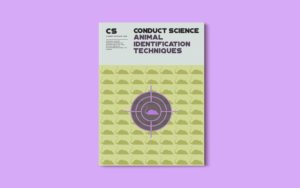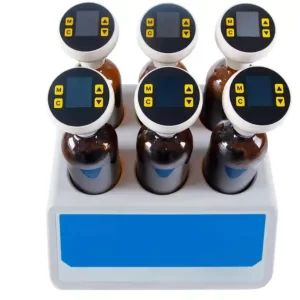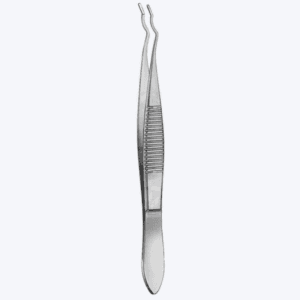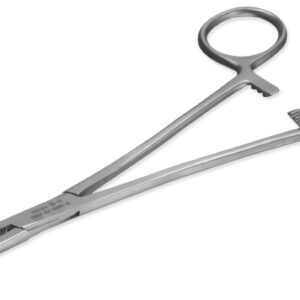As an Amazon Associate, ConductScience Inc. earns revenue from qualifying purchases
Introduction
Lipids are biomolecules having a diverse group of organic compounds that include fatty acids, waxes, phospholipids, glycolipids, and sterols. These compounds are insoluble or poorly soluble in water due to the presence of long hydrocarbon chains in their structures. They are easily soluble in organic solvents such as benzene, ether, or chloroform. Lipids perform a diverse range of functions within the cells of living organisms, such as 1) acting as a storage form of metabolic fuel or energy, 2) being an integral component of the biological membrane, 3) signaling molecule, and 4) acting as a protective coat in bacteria, plants, insects, and invertebrates (protects from the harsh environment). Because of their role in living organisms, lipids and their derivatives have been an area of interest in many research laboratories to understand the various functional processes of living organisms.
This article will introduce some histochemical techniques that are being used in laboratories worldwide to understand the histochemistry of lipids. But, before we discuss the histochemical methods for lipid demonstration, it’s essential to learn the pretreatments that are done to maintain the chemical nature and structural integrity of the cells or tissues.
Pretreatments
This includes freezing, sectioning, and fixation of the tissues. To demonstrate lipids, use fresh frozen tissues. After sectioning, the process of demonstration should be quickly performed to prevent the auto-oxidation of lipids that can change their physicochemical properties[3].
Fixation
For fixation, use formaldehyde mixed with calcium chloride (calcium immobilizes the phospholipids). But not all types of lipids demonstration require fixation, as some of the lipids can be demonstrated without performing any fixation step. How different types of lipids differ in their fixation[3] is explained below:
- For lipids like triglycerides, lecithin, sphingomyelin, unsaturated lipids, cholesterol esters, and plasmalogen phospholipids, after cryostat sectioning, no post-fixation is required.
- For lipids like free fatty acids, glycolipids, and phospholipids, staining of all lipids by the Sudan black method require post-fixation of 1 hour by calcium-formol in the refrigerator.
- For lipids like phosphoglycerides, staining of cholesterol and cholesteryl esters by Perchloric acid naphthoquinone method requires post-fixation by calcium-formol for at least one week in the refrigerator.
Note: Fixation of materials containing a high amount of neutral lipid droplets should be avoided as it will merge the lipid droplets.
Histochemical Techniques for the demonstration of Lipids
Lipids within cells or tissues are associated with other types of substances like some other lipids, non-lipid substances, or metal ions. The association of lipids with other compounds complicates the results obtained after the demonstration, which is why, to interpret the lipid reaction, knowledge of the structure, physiology, and biochemistry of the lipids is required[3]. Also, the conclusion should be drawn after demonstrating a class of lipids with multiple reactions (this is done to validate the results).
Demonstration of all types of Lipids (including hydrocarbons and higher alcohols)
We are already familiar with the classes of lipids and in this section, some histochemical techniques are introduced which can demonstrate all classes of lipids.
Principle: Staining with Oil Red O involves the principle of solubility of these dyes in lipids than in the usual hydroalcoholic solvent.
Materials Required: Sample tissue, Oil Red O, Hematoxylin, Isopropanol (100% & 60%), distilled water, and Coplin jar to cover it properly.
Preparation of Solution:
Oil Red O Stock Solution: Mix 0.5 g of Oil Red O in 100 ml of 100% isopropanol and dissolve it completely by keeping it in a gentle hot water bath.
Oil Red O Working Solution: Add 30 ml of stock solution of dye in 20 ml of distilled water and allow it to stand for 10 minutes. Then, filter the dye in a Coplin jar.
Note: The working solution should be freshly prepared to perform the experiment.
Procedure:
- To remove the fixatives, wash the section twice with water. Then add 60% ethanol to the section and leave it for 5 minutes.
- Discard the isopropanol and add the Oil Red O working solution evenly to the section. Then, cover it properly and incubate it for 10-20 minutes.
- Discard the solution of dye and wash the section well with water to remove any extra remaining stain.
- Incubate the section in Hematoxylin for 1 minute.
- Discard Hematoxylin and wash the section 2-5 times to remove any extra Hematoxylin.
- Cover the section with water and observe it under the microscope[7].
Observation: The lipid droplets will be observed in red color and nuclei in the blue color.
Principle: Osmium tetroxide is fat-soluble and when it reacts with fats, it gets associated with the lipid head and forms a black-colored reduction compound.
Materials Required: Sample tissue, 2% aqueous solution of osmium tetroxide, potassium dichromate, and distilled water.
Reagent Preparation: Mix 5% Potassium dichromate and 2% osmium tetroxide in equal parts in glass scintillation vials. The final concentration should be 1%.
Procedure:
- Wash the sample tissue with water 3-5 times to remove the fixative.
- Incubate the sample tissue in osmium tetroxide (in a fume hood) for 48 hours at room temperature.
- Wash the sample tissue in the cool running tap water for 2 hours, mount, and observe it under the microscope[5].
Observation: Osmium black colored staining will be observed in the sample tissue.
Demonstration of Hydrophobic or Hydrophilic Lipids
- Bromine-Sudan Black method
Principle: It is a basic dye and it reacts with the acidic group of lipids. This reaction results in the formation of a black-colored product.
Materials Required: Tissue section, 2.5% aqueous bromine, 0.5% sodium bisulfate, Sudan Black, 70% ethanol, and distilled water.
Procedure:
- Expose the section to 2.5% aqueous bromine for one hour (in a fume cupboard).
- Wash the section well with water. Then, dip the section in 0.5% sodium bisulfate to remove excess bromine.
- Put the section in the Sudan black for 10 minutes.
- Transfer the section to the 70% ethanol for differentiation.
- Wash the section well with water and mount it in glycerine jelly for observation[1].
Observation: Triglycerides and unsaturated fats will be stained in blue-black color. Some phospholipids will appear grey.
This method was originally designed to study the finer details of neuroanatomy and pathological conditions of the nervous system.
Principle: The oxidation-reduction reaction of osmium tetroxide with lipid droplets results in the formation of a black-colored product.
Materials Required: Sample tissue, 2.5% potassium dichromate, osmium tetroxide 1%, alcohol 70%, alcohol 90%, absolute alcohol, and distilled water.
Procedure:
- Wash the section by using water to remove the formalin used in fixation. (This step is not required if using unfixed tissue)
- Put the section in 2.5% potassium dichromate at 21 °C for 24 hours.
- Wash the section by using distilled water till the deep yellow color disappears.
- Put the section in 1% osmium tetroxide at 21 °C (in dark) for 16-36 hours.
- Wash the section well with water to remove all acidity.
- Put the section in 70% alcohol for 1-2 minutes.
- Transfer the section to 90% alcohol for 1-2 minutes.
- Transfer the section to absolute alcohol for 1-2 minutes.
- Mount the section on a slide for observation[6].
Observation: Black-colored lipid droplets will be observed in the section.
Demonstration of Hydrophobic Lipids (storage lipids)
Hydrophobic lipids include waxes, lipofuscin, free fatty acids, cholesterols, and triglycerides. The techniques to demonstrate hydrophobic lipids are given below:
- Perchloric acid naphthoquinone (PAN) Method
Materials Required: Sample tissue, naphthoquinone, sulfonic acid, Ethanol, 60% perchloric acid, 40% formaldehyde, 1% ferric chloride, perchloric acid, Distilled water, and slide.
Preparation of reagent:
Mix naphthoquinone and sulfonic acid in a 1:2 ratio and take 40 mg from the mixture, and then add Ethanol (20 ml), 60% perchloric acid (10 ml), 40% formaldehyde (1 ml), and Distilled water (9 ml) to the mixture. Use this reagent within 24 hours.
Procedure:
- Air-dry the section on the slide.
- Put the section in 1 % ferric chloride for 4 hours.
- Wash the section well in distilled water.
- Paint the section carefully with the prepared reagent using a camel-hair brush (brush should be washed after using every time).
- Heat the slide at 70 °C for 1-2 minutes. Replenish the section with stain to avoid it from drying.
- Put a drop of perchloric acid on the cover glass[7].
Observation: Cholesterol and related steroids will be observed in blue color.
Principle: Nile blue is the composition of two dyes that is blue oxazine and red oxazolone (an oxidation product of oxazine). Oxazone is a lysochrome that reacts with the lipids to give a red to pink color.
Materials Required: Sample tissue, Nile blue, sulfuric acid, and distilled water.
Reagent Preparation:
Nile blue solution
Add 0.5 g of Nile blue to 99 ml of distilled water and mix it well, then add 1 ml of sulfuric acid.
Procedure:
- Wash the section with distilled water.
- Put the section in the Nile blue solution for 20 minutes.
- Wash the section well with distilled water.
- Mount the section in glycerine jelly[7].
Observation: Neutral lipids will be stained in dark red to pink color and acidic lipids will be stained in blue color.
Demonstration of Heterophasic Lipids
Heterophasic lipids are also called amphipathic lipids. This group includes phospholipids, glycosphingolipids, and cerebrosides. Histochemical techniques to demonstrate these lipids are as follows:
This method has already been discussed in the section of the demonstration of hydrophobic lipids.
Principle: Periodic acid oxidizes the aldehyde group that reacts with Schiff’s reagent which gives a magenta-colored product.
Materials Required: sample tissue, 98% formic acid, hydrogen peroxide, Concentrated H2SO4, 10% aqueous chloramine T, dinitrophenyl hydrazine, 1 M HCl, 0.5% periodic acid, Schiff’s reagent, and distilled water.
Reagent preparation:
Performic acid
Mix 98% formic acid (45 ml), hydrogen peroxide (4.5 ml), Concentrated H2SO4 (0.5 ml) inside a fume hood.
Procedure:
- Deaminate the section in 10% aqueous chloramine T at 37 °C for 1 hour.
- Wash the section vigorously with water.
- Transfer the section to performic acid for 10 minutes.
- Wash the section with water.
- Treat the section with 0.5% perchloric acid for 10 minutes.
- Wash the section by using distilled water.
- Stain the section in Schiff’s reagent for 15 minutes.
- Rinse the section by using distilled water followed by washing it with the tap water.
- Mount the section in glycerine jelly[7].
Observation: The heterophasic lipid in the section will be stained in magenta color.
Demonstration of Phospholipids
Principle: Osmium-α-naphthylamine chelates with the hydrophilic lipid present in the tissue that gives it orange to red color.
Materials Required: Sample tissue, Osmium tetroxide, potassium chlorate, α-naphthylamine, and distilled water.
Reagent preparation:
Osmic tetroxide and potassium chlorate (OsO4-KClO3) solution
Mix 1 % Osmic tetroxide and 1% potassium chlorate in 1:3 (v/v) ratio.
α-Naphthylamine solution
Add a saturated aqueous solution of α-naphthylamine in distilled water at 37-40 °C. Then, filter the solution through Whatman No. 2 filter paper.
Procedure:
- Treat the slide with the OsO4-KClO3 solution for 18 hours at room temperature.
- Wash the slide well with distilled water.
- Treat the slide with the α-naphthylamine solution for 15 minutes at 37 °C.
- Wash the section with distilled water and mount it in glycerine jelly[4].
Observation: The phospholipid will be stained in orange to red color.
- Chromatin-acid hematin Method
Principle: Reaction of divalent chromate with the phospholipids form a chelated product. This product, when it reacts with acid Hematin solution, forms a dark blue to black colored product.
Materials Required: Sample tissue, 5% Potassium Dichromate (K2Cr2O7), Hematoxylin, Sodium Iodate (NaIO3), 0.25% Sodium borate, 0.25% Potassium Ferricyanide, glacial acetic acid, and distilled water.
Reagent Preparation:
Hematoxylin solution
Dissolve 50 mg of Hematoxylin in 50 ml of 0.01% NaIO3. Heat the solution until it starts boiling. Cool the solution and add 1 ml of glacial acetic acid.
Borax ferricyanide
Mix 0.25% sodium borate and 0.25% potassium ferricyanide.
Procedure:
- By using 5% K2Cr22O7 chromatize the section at 60 °C for 4 hours.
- Wash the section well by using distilled water.
- Stain the section with Hematoxylin solution for 30 minutes at 37 °C.
- Wash the section well with water.
- Put the section in the differentiating solution of borax-ferricyanide for 18 hours at 25 °C.
- Dehydrate the section and mount it on a slide for observation[2].
Observation: Phospholipids will be observed in dark blue to black color.
Histochemical demonstration of Lipids – Uses/Application
Histochemical demonstration of Lipids is used in the biomedical field to demonstrate the accumulation and localization of the lipids in different pathological conditions. These methods, aid to confirm the identity of various diseases, some of which are described below:
- Fatty degeneration: In this condition, the accumulation of lipids occurs within the cell. The lipid accumulation can be observed by staining it with Sudan black or Osmium tetroxide.
- Liposarcoma: It is a soft tissue sarcoma that arises in the fat cells. It occurs in the muscles of limbs or in the abdomen.
- Tay-Sach disease: It is a genetic and neurodegenerative disorder. This is due to a mutation in the HEXA gene that helps in the activation of the beta-hexosaminidase A enzyme. Inactivation of the enzyme causes the accumulation of GM2 ganglioside.
- Gaucher’s disease: In this condition, the accumulation of glucocerebroside occurs in the white blood cells and macrophages. It also gets accumulated in the organs like the spleen, liver, lungs, and kidneys.
- Niemann-Pick disease: This is a hereditary and mutational disease. In this condition, the accumulation of sphingomyelin occurs in the lysosome due to the non-functioning of the lysosomal enzyme sphingomyelinase, which breaks sphingolipids.
Conclusion
Lipids are biomolecules required for the proper functioning of the body of living organisms. Demonstration of histochemistry of lipids is a little complicated due to the association of lipids with other compounds, that is why good knowledge and expertise is required to interpret the results. Nowadays, many histochemical techniques are available to demonstrate lipids, which are being used in research studies and in the medical field to examine various diseases.
References
- Bayliss, O. B., & Adams, C. W. M. (1972). Bromine-Sudan Black: a general stain for lipids including free cholesterol. The Histochemical Journal, 4(6), 505–515. DOI:10.1007/bf01011130.
- Hori, S. H. (1963). A Simplified Acid Hematin Test for Phospholipids. Stain Technology, 38(4), 221–225. DOI:10.3109/10520296309061182.
- Lyon Hans (1991). Theory and Strategy in Histochemistry: A Guide to the Selection and Understanding of Techniques (1st edition), Berlin, Springer.
- Negi, D. S., & Stephens, R. J. (1981). Rapid Otan Method for Localizing Unsaturated Lipids in Lung Tissue Sections. Stain Technology, 56(3), 177–180. DOI:10.3109/10520298109067306.
- Scheller, E. L., Troiano, N., VanHoutan, J. N., Bouxsein, M. A., Fretz, J. A., Xi, Y., … Horowitz, M. C. (2014). Use of Osmium Tetroxide Staining with Micro Computerized Tomography to Visualize and Quantify Bone Marrow Adipose Tissue In Vivo. Methods of Adipose Tissue Biology, Part A, 123–139. DOI:10.1016/b978-0-12-411619-1.00007-0.
- Stewart, R. J. C. (1936). A short Marchi technique. The Journal of Pathology and Bacteriology, 43(2), 339–343. DOI:10.1002/path.1700430212.
- Suvarna S. Kim, Layton Christopher, Bancroft John D., (2013). Bancroft’s Theory and Practice of Histological Techniques (7th edition), Elsevier, Churchill Livingstone.












